How ‘dumb luck’ launched a $1 trillion opportunity for Stonepeak boss Mike Dorrell
Stonepeak founder Mike Dorrell was in the right place at the right time. But the highly sought after fund manager is rewriting the rules on infrastructure.
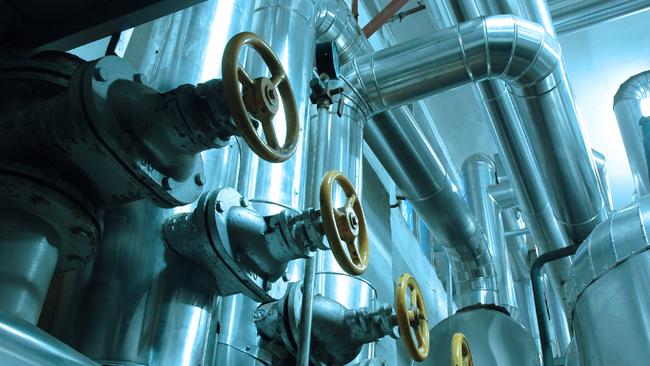
It’s a late Sydney morning and Mike Dorrell crosses a CBD street and sits himself down on the sidewalk table of a busy café.
The New York-based Dorrell looks more the part of a tech founder than a banker. He’s wearing jeans, white sneakers and a white t-shirt. The hyper-casual look stands out among accountants and other office workers meeting at other tables.
“It’s changed a lot,” he says in a broad Australian accent as he looks around. “I sometimes find myself using Google Maps to get around when I’m driving but I try not to use it. There’s so many streets that suddenly turn one way.”
Dorrell is co-founder and chairman and chief executive of Stonepeak, which these days is one of the most sought after private investment funds on Wall Street. His fund now has more than $US70bn ($104bn) under management and counts some of the world’s biggest pension names, including Australian funds, as backers.
Stonepeak remains privately owned. This means Dorrell, the ex-Macquarie deal-maker who in the early days put it all on the line to get his fund off the ground, is now comfortably a billionaire.
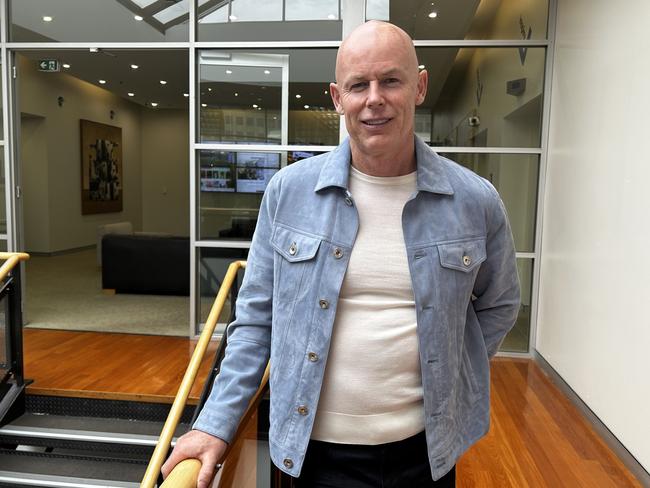
His fund has controlling investments in companies across dozens of countries from fibre networks to data centres, batteries and energy infrastructure.
One of the companies it owns transports around 10 per cent of the world’s gas over the oceans through LNG tankers. Another company is one of the world’s biggest shippers of perishable food.
Stonepeak recently made a splash in Australia when it acquired a 70 per cent stake in GeelongPort along with Spirit Super in a $1.1bn deal. More recently it has been running the ruler over east coast gas pipeline operator Jemena.
Dorrell was one of the wave of bankers who worked under Nicholas Moore that went to New York with Macquarie in the early 2000s looking to build out infrastructure. Few were interested or could figure how anyone could make a dollar from lumbering assets like toll roads or an airport.
“It was a lot of door knocking. No one had heard of Macquarie. They pronounced it the wrong way,” he says.
“It was a lot of scrapping around which in a funny way was really good for investing in those early days become no one else was doing this stuff.
“The bad part was you couldn’t raise any money or get any attention.”
All the funds for deal making were coming back from Australian and Canadian super funds, but the pressure was on to widen the field.
Most of the deals were around project financing and small utilities. The exception being the Chicago Skyway toll road deals where everyone showed up because they were big government-run processes. Macquarie still emerged with the road, though, paying $US1.8bn, and putting the bank on the map.
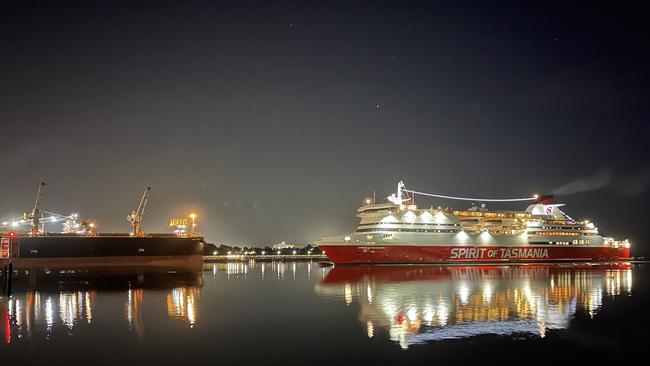
However, Dorrell said it was in 2006 the tide turned almost overnight when the big Wall Street banks realised just how much money Macquarie was making from infrastructure.
Suddenly banks like Citi, Goldman Sachs, Morgan Stanley, Credit Suisse and even conglomerate GE wanted to emulate the model and were quickly crowding the space. They were raising billions of dollars for new funds but were approaching slow moving infrastructure like private equity.
“And that’s also when I said: ‘Holy crap I’ve just drew dumb luck. I’m 31 years old and I happen to have experience in this area where people are raising all this money who, frankly, are going to be learning the game. If ever going to do something entrepreneurial, it’s just staring me in the face’.
“It’s either now or I’m never going to do it.”
Blackstone backing
Dorrell and his partner, another former Macquarie banker Trent Vichie, soon found the backing of Wall Street asset giant Blackstone to launch an infrastructure fund. Dorrell says where everyone else was chasing the Macquarie model of toll roads or airports on sale around the world, they knew the US market had limited supply, rather the market there was all about privately held assets, or the digital assets, the pipeline assets, the utility assets.
They left Macquarie in June and their gardening leave ended on November 1. The year was 2008 and the Global Financial Crisis had well and truly arrived.
“It was a total shit show,” he says. However, he says in retrospect “dumb luck” had arrived again.
“If you’ve got Blackstone in your pitchbook everyone will meet you. We had 500 meetings in two years.”
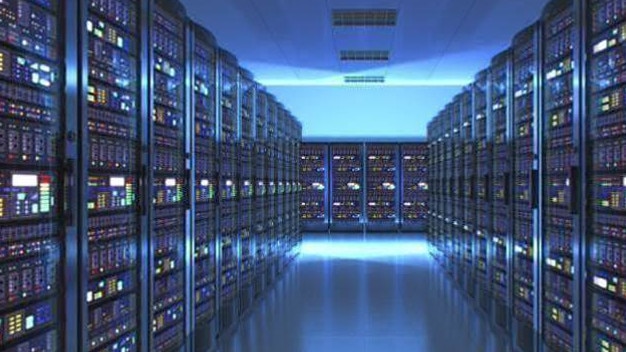
Still it was painfully slow going. For two years their fund raised barely a dime.
After not much activity, they left Blackstone to give it a final try. Dorrell says Blackstone was still a strong supporter through that point including giving the pair cheap rent “in a very nice office building” and providing references.
Dorrell is a mad cyclist. The morning he met The Weekend Australian he had been out early with some friends in Sydney, riding the Watson’s Bay loop that takes in pinch climbs of Bellevue Hills in the city’s east. Stonepeak itself was named after the cycling mecca of Mont Ventoux in France.
“We tried 50 names and they were all taken,” he says. “I happened to be cycling that climb and the top third I looked up and it just looked like a moonscape. I thought ‘Stone’ and ‘peak’. I Googled it and it wasn’t taken. Let’s do it.”
It wasn’t until late 2012 they scored a foundation $US400m commitment from a US teachers’ pension fund. But it was only on the condition they could raise another $US250m. It all looked hopeless until at the eleventh hour another backer – a state pension fund – agreed to come to the party. Finally, Stonepeak was away.
No flipping
It’s a much different story today, after years of knocking on doors and being turned away Stonepeak is being sought out by asset managers. This has seen it post stellar growth in funds under management, particularly since the global pandemic.
It now ranks as one of the biggest privately held investment funds in the world. This means Dorrell has the luxury to say no to deals and even more leverage.
At its core infrastructure should deliver long-term stable returns, with a protection against inflation, Dorrell says. It’s not an asset to be bought and flipped.
Renewables such as wind farms and solar have now moved through a boom and bust cycle. The assets have gone from being investments to being traded. In the wake of Russia’s invasion of Ukraine energy security has carried a premium. So too the variable returns of renewables have matched the earnings profile that demands. Over the past two years valuations have plummeted.
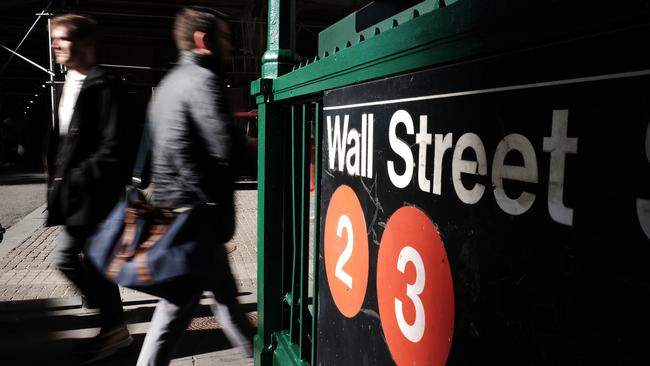
“I think that anyone who has paid a big premium to build these assets is probably regretting doing it in retrospect. It doesn’t take away from the fact that there’s trillions of dollars going into the energy transition.
“It’s a very good cautionary tale that just because there’s a great growth trend and a great demand trend, what really matters is underlying unit economics. If you’re underlying a solar farm or wind farm, isn’t providing a return and if you’re unwilling to hold it for the long term, because those returns are too skinny that probably tells you that maybe it’s not the right time you should be investing in that stuff,” Dorrell says. He quickly adds Stonepeak is investing in renewable infrastructure across Asia.
There was a mispricing of renewable assets in US and big western markets, he says. “It’s the reverse in the Asian markets, particularly the developed markets in Taiwan, Japan and South Korea, because they are desperately trying to get energy independent, and so they’re willing to offer much more interesting offtake arrangements.”
AI boom
And what about data centres? These assets are the hottest part of the market with a new fund being launched each week on the digitisation theme. The warehouses filled with computing power deliver the horsepower to power AI.
“There are certainly hints of what went on in renewables in that (data centre) space.”
Dorrell says again it’s important to put real numbers around it. Many contracts for a cloud-based data centre are 20 years. After all the energy costs and build costs there’s an assumption returns are around 6-7 per cent. “Personally I don’t think it’s anywhere near that, I think a more conservative analysis of 2 or 3 per cent.
“No one ought to be buying an asset that you got to hold for three years to get two or three.
The mega-data centres, the hyperscalers or the likes of AirTrunk, they tend to be seven-year contracts rather than 20 years. However they have a high upfront cost.
“So you’re clearly not getting all your money back in seven years. But if you are willing to make the bet that these contracts will be renewed and the leases steps up 3 per cent a year for the life of the data centre that’s getting more like 14 per cent for the life of that.
“Obviously that’s lot more interesting than renewables.”
Before the AI boom really took hold in the past two years the long-term trend for data centre rental rates was to go down, Dorrell says. However he is today seeing data centres built for something like 10 times earnings that are now being sold for more than 50 times earnings.
“It’s got an element of that trade. It not as it’s not as severe as renewables. But ultimately, when you’re investing, what really matters is the underlying economics of what do I get about all this forever.”
Renewables and digitisation remain dominant themes in infrastructure but a less obvious one that is getting a lot of Stonepeak’s attention is transport and logistics. The world is rewiring its supply chains over geopolitical tensions, while the digital world is driving more trade.
Infrastructure itself is a $US1 trillion opportunity but it comes down to backing the right space and having the discipline to follow the returns, Dorrell says.
In Australia it represents around 10 per cent of asset allocation and Europe and Canada are following similar trends. In the US it was zero 15 years ago. Today it’s around 4 per cent but Dorrell sees this moving to 8 per cent over time. Then the other side is it provides the liquidity to deliver an infrastructure solution – whether that’s renewables, transport or digitisation.
“It’s the asset class that has just got strong, strong tailwinds. Nicholas Moore must be sitting there and be very proud of what he started.”
johnstone@theaustralian.com.au






To join the conversation, please log in. Don't have an account? Register
Join the conversation, you are commenting as Logout